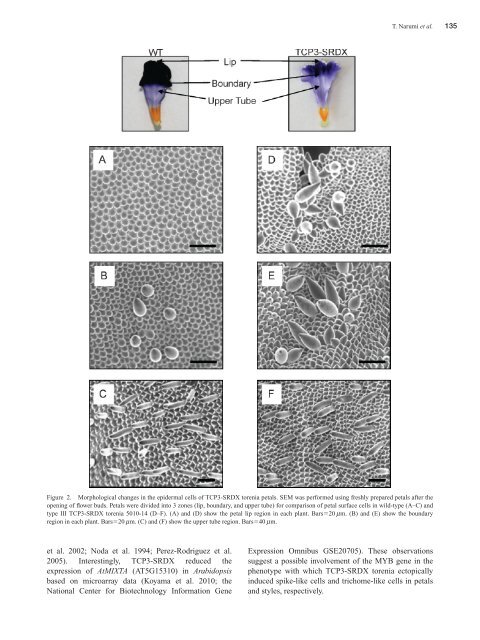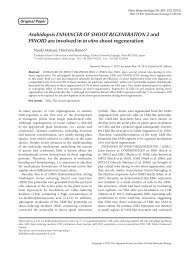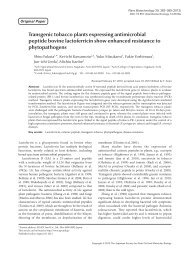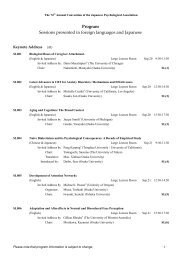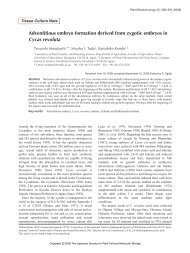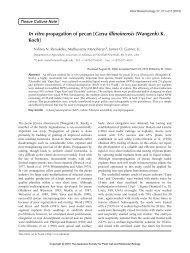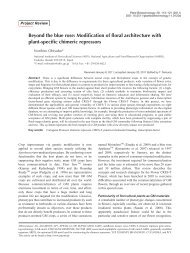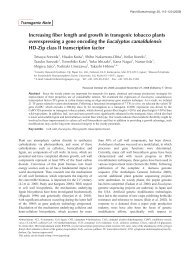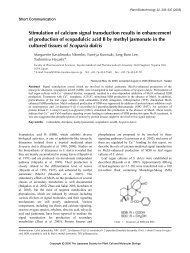Plant Biotechnol. 28(2): 131-140 (2011) - Wdc-jp.biz
Plant Biotechnol. 28(2): 131-140 (2011) - Wdc-jp.biz
Plant Biotechnol. 28(2): 131-140 (2011) - Wdc-jp.biz
You also want an ePaper? Increase the reach of your titles
YUMPU automatically turns print PDFs into web optimized ePapers that Google loves.
T. Narumi et al. 135<br />
Figure 2. Morphological changes in the epidermal cells of TCP3-SRDX torenia petals. SEM was performed using freshly prepared petals after the<br />
opening of flower buds. Petals were divided into 3 zones (lip, boundary, and upper tube) for comparison of petal surface cells in wild-type (A–C) and<br />
type III TCP3-SRDX torenia 5010-14 (D–F). (A) and (D) show the petal lip region in each plant. Bars20 mm. (B) and (E) show the boundary<br />
region in each plant. Bars20 mm. (C) and (F) show the upper tube region. Bars40 mm.<br />
et al. 2002; Noda et al. 1994; Perez-Rodriguez et al.<br />
2005). Interestingly, TCP3-SRDX reduced the<br />
expression of AtMIXTA (AT5G15310) in Arabidopsis<br />
based on microarray data (Koyama et al. 2010; the<br />
National Center for <strong>Biotechnol</strong>ogy Information Gene<br />
Expression Omnibus GSE20705). These observations<br />
suggest a possible involvement of the MYB gene in the<br />
phenotype with which TCP3-SRDX torenia ectopically<br />
induced spike-like cells and trichome-like cells in petals<br />
and styles, respectively.


